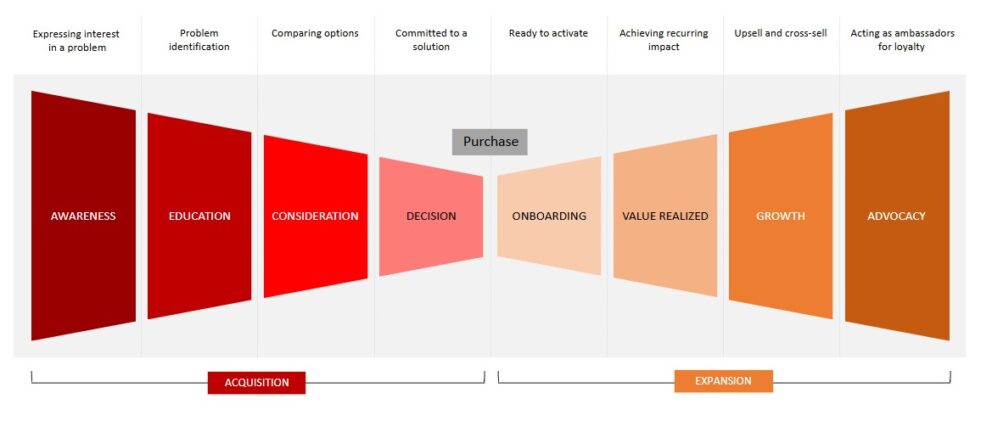What You Need To Know for ABM Success

By Matt Heinz, President of Heinz Marketing
“Salespeople rarely talk about how many leads they’ve closed – they talk about accounts they win,” says Brandon Redlinger, Director of Growth at Engagio.
B2B has never been about individual leads, but rather accounts. You must support long, complex sales that involve many stakeholders at each target account.
Instead of spending sales and marketing resources on large amounts of individual leads, account-based marketing (ABM) focuses efforts instead on deepening engagement with a select group of target accounts most likely to generate the most revenue.
I asked Brandon to give his perspective on the most important components of ABM, and what B2B organizations need to achieve success within an account-based world. Here’s what he had to say:
First and foremost, find the right leader for your ABM team.
Great companies are built with great people. And great ABM programs are no different. That’s why you must find the right leader for your ABM initiative.
Whether you’ve identified candidates within your organization or are looking to hire from outside, there are core stills unique to this key role. Since this role is relatively new, you must become a detective and piece things together on your own.
Gauge a leader’s abilities by seeing how they respond to the following questions. They key to dig into each answer and ask follow up questions. You Find out the specifics.
- What’s your definition of ABM?
- Why do you think ABM is a good strategy for our business?
- Describe your process for launching an ABM program.
- If you had unlimited budget and could buy any technology to help execute your ABM strategy, what would it be?
- How do you gauge engagement with and movement within target accounts?
- Describe your experience working with other departments executing your past ABM programs.
- Describe an ABM team you’ve led or been a member of – including the key roles and responsibilities – and what did and didn’t work. While the makeup of the core ABM team varies by organization, it often includes people from Sales, Marketing, Professional Services/Support, and Solutions/Service Consulting.
- Walk me through, from start to finish, the most successful ABM campaign you’ve executed.
Hiring an ABM leader will be the game changer that ignites your strategy. As you’re considering candidates, look for strong leaders with the right array of skills, experience, and characteristics. Whatever you do, never underestimate the soft skills that will fuel this person’s ability to rally the troops to drive more account-based revenues.
The new metrics marketers should track to prove the impact of ABM.
This topic itself deserves its own ebook. In fact, we’ve written an entire 150+ page ebook on the subject called The Clear and Complete Guide to ABM Analytics.
When you’re taking an account-based approach, you’re not so much focused on quantity as you are quality. While leads and opportunities are important to note, it’s not enough for ABM. You need metrics that are suited to this specialized discipline. Since ABM is a fundamentally different approach, it requires different metrics – metrics that provide an account-centric lens to your measurement.
The longer the sales cycle and the more complex the deal, will increase the the need for more metrics that lend insights into an account’s progress through the funnel.
According to SiriusDecisions, there has been an ongoing and recent shift resulting in a 24% increase in sales cycles, which may in part be due to the addition of account-based approaches applied to sales & marketing activities. This coupled with understanding ABM’s influence – rather than solely relying on closed-won opportunities as the metric of success – necessitates the analysis of attributed pipeline along the way vs an enter to exit ratio in typical KPI reporting.
That’s why engagement matters. By tracking how deeply the right people at an account engage with your brand, marketers have a quantifiable way of showing interest and progress with a potentially long nurturing process.
At Engagio, we recommend focusing on five categories of ABM metrics:
- Coverage – Do you know the people at your target account?
- Awareness – Do those people know who you are? Do they have a heartbeat with you?
- Engagement – Do they spend time with you? Are they engaged with you, your content or your brand?
- Reach – How many people are the right people?
- Impact – Do the efforts and ABM programs you’re running impact the sale?
A lot of this comes down to is realizing that marketing needs to “embrace revenue responsibility” (yes, that’s a line straight from Matt Heinz himself).
Get relevance and personalized right – here’s what that looks like.
In ABM, you still need to knock on people’s doors, but you’re not doing it purely cold. This entire strategy depends on your ability to do homework and learn as much as you can about your target accounts. The whole point is to maximize your relevance within and understanding those accounts.
With the advent of sales automation, reps have taken advantage (and the liberty) to blast prospects en masse with cold sales emails. This has lead to “robo-spam,” which is harming the reputation of sales reps everywhere.
Here’s one subtle distinction that makes a world of difference when doing outbound: Customization is NOT personalization!
Customizing is using variables. For example, you’re filling in {{name}} and {{company}} custom to the prospect, which some reps think this makes for a personalized email. Personalization is saying something relevant to a very specific person. It’s what one-to-one human interaction is.
The technology itself doesn’t make it a good cold email. The technology gets you halfway there by stripping away the outward signs of automation and giving you the ability to customize emails in bulk before sending. As I mentioned, it’s only half of the equation. The other half is adding the human element, which cannot be automated by computers.






